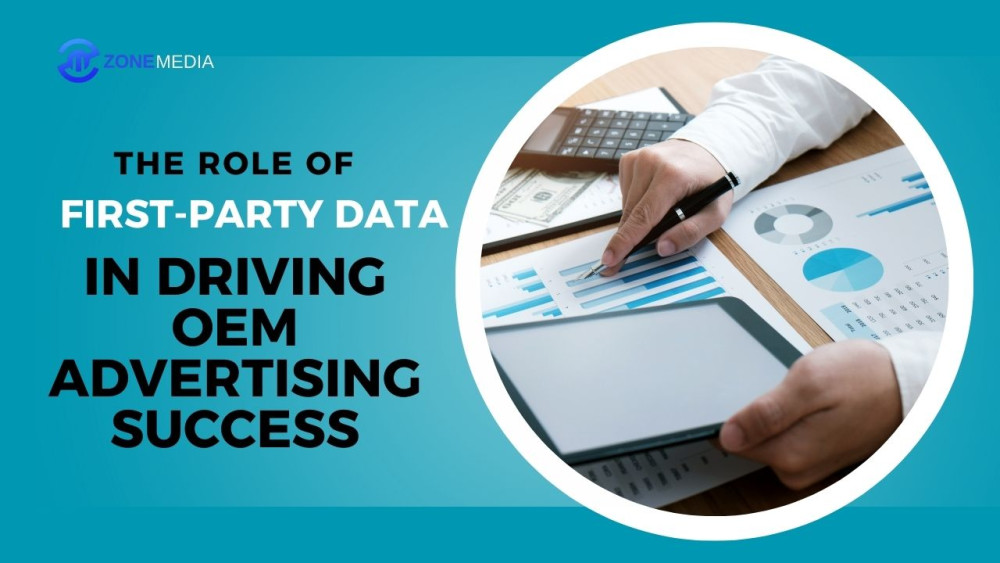Introduction: The Power of First-Party Data in OEM Marketing
As digital privacy regulations tighten and third-party cookies phase out, Original Equipment Manufacturers (OEMs) are shifting their focus towards first-party data to drive advertising success. First-party data—information collected directly from customers—enables OEMs to create more personalized, privacy-compliant, and effective marketing campaigns.
For marketers, leveraging first-party data isn’t just a trend; it’s a necessity. Let’s explore how OEMs can harness this invaluable resource to enhance targeting, improve ROI, and build deeper customer relationships.
1. Why First-Party Data Matters for OEM Advertising
First-party data comes from direct interactions with websites, mobile apps, CRM systems, customer service inquiries, and loyalty programs. Unlike third-party data, which is collected by external sources, first-party data is:
Accurate and reliable, as it originates from real customer engagements.
Privacy-compliant, reducing reliance on third-party tracking mechanisms.
Cost-effective, eliminating dependency on external data providers.
For OEMs, leveraging this data leads to more relevant ad placements, higher engagement rates, and stronger customer trust.
2. Enhancing Targeting and Personalization with First-Party Data
With first-party data, OEMs can create highly targeted, customized ad experiences. Here’s how:
Behavioral Insights: Track customer preferences, product interactions, and past purchases to predict future behavior.
Dynamic Retargeting: Serve personalized ads to users based on previous engagements.
Lookalike Audiences: Use AI-driven models to identify new potential customers similar to existing ones.
For example, an automotive OEM can use first-party data to deliver personalized promotions on new vehicle models to previous buyers, increasing the likelihood of repeat purchases.
3. Boosting Ad Performance and ROI
By relying on verified customer data, OEMs can improve the efficiency of their ad spend. Benefits include:
Higher Conversion Rates: Targeted ads result in more meaningful interactions.
Reduced Wasted Ad Spend: Ads reach the right audience instead of being shown to unqualified users.
Better Attribution and Measurement: Track the full customer journey with end-to-end analytics.
A consumer electronics OEM can leverage first-party data to track product interest and send timely promotional offers to users who have engaged with specific product pages.
4. Strengthening Customer Trust and Data Privacy Compliance
With the decline of third-party cookies and stricter privacy laws such as GDPR and CCPA, consumers expect brands to handle their data responsibly. OEMs can build trust by:
Being transparent about data collection and offering easy opt-in/opt-out choices.
Providing real value in exchange for data, such as personalized discounts and exclusive content.
Implementing strong data security measures to protect consumer information.
Brands that prioritize ethical data usage will gain long-term customer loyalty and ensure compliance with evolving regulations.
5. How OEMs Can Build a Strong First-Party Data Strategy
To maximize the impact of first-party data in advertising, OEMs should:
Invest in CRM and Data Management Platforms (DMPs): Centralized storage helps analyze and activate data effectively.
Encourage Direct Customer Engagement: Offer incentives like loyalty programs and interactive surveys to collect valuable insights.
Leverage AI and Machine Learning: Automate data processing for real-time audience segmentation and personalization.
A software OEM might use AI-driven analytics to identify trends in product adoption and tailor in-app advertising accordingly, improving user engagement.
Conclusion: Future-Proofing OEM Advertising with First-Party Data
First-party data is reshaping the landscape of OEM advertising, enabling brands to move away from cookie-dependent strategies and embrace a more data-driven, privacy-first approach. By leveraging customer insights, AI-powered targeting, and ethical data collection, OEMs can enhance personalization, maximize ROI, and build lasting consumer trust.
As the future of advertising shifts towards greater transparency and user control, OEMs that prioritize first-party data will lead the industry in delivering effective, privacy-compliant marketing strategies.


